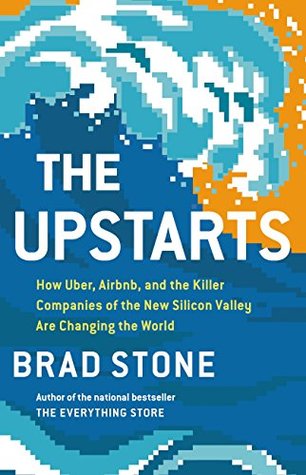More on this book
Community
Kindle Notes & Highlights
by
Brad Stone
Read between
August 29 - September 2, 2020
So on January 5, 2010, Travis Kalanick Tweeted in the peculiar shorthand common to the 140-character messaging service: Looking 4 entrepreneurial product mgr/biz-dev killer 4 a location based service… pre-launch, BIG equity, big peeps involved—ANY TIPS??
Halfway across the country, in Chicago, Illinois, a twenty-seven-year-old General Electric employee named Ryan Graves sent the single most lucrative Tweet in internet history: @KonaTbone heres a tip. email me :) graves.ryan[at]gmail.com.
Growth hackers use their engineering chops to find clever, often controversial ways to improve the popularity of their products and services. Blecharczyk, it turned out, was an exceedingly good one.
Chesky wasn’t happy about the internal discord but was learning to live with it. Amid the turmoil of 2011, he had found his footing and embraced his job as the company’s top decision maker. He had laid out a course of action to deal with the EJ mess and chosen to battle the Samwers rather than take the easier path of working with them. He still listened to colleagues and his co-founders, but after that year, he no longer tried to seek consensus.
A launch party should bring together local media and tech luminaries, while a local celebrity should be selected as the first rider in the city and promoted in a blog post.
Uber had flexed its political muscles for the first time, and won. A new tactic was then added to the playbook: when traditional advocacy failed, Uber could mobilize its user base and direct their passion toward elected officials.
Travis’s Law. It went something like this: Our product is so superior to the status quo that if we give people the opportunity to see it or try it, in any place in the world where government has to be at least somewhat responsive to the people, they will demand it and defend its right to exist.
Few Silicon Valley execs can so effectively phase shift—digging into operational complexities at one moment, negotiating with politicians the next, and then leaving it all behind to speak in relatable tones to students, other startup founders, and the general public. Chesky did this with ease, and it was a reminder of the remarkable personal skills that had propelled his company to such astounding heights.
If people dislike you or if people hate you, it’s often normal to ignore them, to avoid them or to hate them back. The only real solution is to meet the people that hate you.
He left Alibaba in 2012 and named his new taxi-hailing application Didi Dache, or “honk honk call a taxi.”
business as possible. In this sense, Uber was part of an American business trend that had been playing out for decades: the categorization by profit-minded companies of workers as part-time contractors instead of employees.
When would Uber get to profitability? “We’ve been profitable in a number of cities for years. We raised a lot of money to invest in our operations. We can stop investing [whenever we want] and get profitable,” he said. I noted there were skeptics who still thought the economics of ridesharing companies were unsustainable, propped up only by venture capital. “Then how were we profitable in the U.S. in February? And maybe March too, I don’t know,” he said. “How could both of those things be true at the same time?”
Unlike his fellow upstart CEO Brian Chesky, who had spent years cultivating mentors, learning from other tech CEOs, and strengthening his relationship with members of his board, Kalanick hadn’t spent time or energy on those kinds of bonds.


